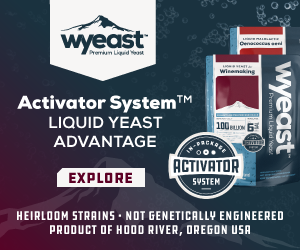The fundamental components of winemaking are compatible with a vegan diet. Grapes, yeast, oak, inorganic chemicals like potassium metabisulfite, and even cultured malolactic bacteria qualify. While definitions vary, wine made with such ingredients may reasonably be called “vegan wine.” Beyond dietary concerns, there are differences among vegan lifestyles, but the core principle is avoiding harm to animals. In terms of diet, that means consuming plant-based foods and not consuming animal-derived products.

Interest has increased in recent years regarding ethical, philosophical, and ecological production methods for wine. Examples include biodynamic, organic, sustainable, vegan, vegetarian, and other categories. In commercial wine production, many of these categories lack legal compliance definitions and labeling is voluntary on the part of the producer. If you have had success using an animal-sourced winemaking product but would now like to eliminate it to make vegan wine, you don’t need to just leave it out. As with other special production categories, winemaking product producers have responded by introducing plant-based or microbial-sourced products as substitutes for many of the traditional animal products.
When reviewing your production for vegan qualification, look for those characteristics. Yeast is a fungus and is in the clear — other fungi, including mushrooms, are important dietary components for many vegans and vegetarians. Cultured bacteria, too, are welcome in vegan foods where they may already be in use for products like sauerkraut, pickles, and plant-milk-based vegan cheese and yogurt. Your grapes are fine, as are other fruits. Avoid honey, made by bees, but you can substitute agave or maple syrup for specialty wine products. If you need to chaptalize — increase the sugar content of your must before fermentation — beet sugar is fine, but exercise caution with cane sugar. Bone char is sometimes employed in refining cane sugar. Grape concentrate is another likely vegan source for boosting sugar, either before fermentation or for backsweetening.
Sulfites and other mineral salts are generally acceptable for these diets. You can also use bentonite and kaolin clay products, polyvinylpolypyrrolidone (PVPP), and gum arabic. The most likely areas to run across animal products are protein fining to remove polyphenolics and lysozyme treatment to stop or prevent malolactic fermentation (MLF).
Among animal protein fining agents, bull’s blood was used in the past, but it has been outlawed around the world since at least 1997. Other animal fining agents are still available and legally approved, leading to the development of vegan alternatives we are considering today. For a gentle removal of excessive tannins in young red wine, egg white fining has been, and still is, a common practice. Egg whites separated from whole eggs, or liquid or powdered egg albumin specialty products, may be employed in making conventional wine. Whole milk, nonfat milk, or milk casein products can also be used for reducing tannic harshness and may offer some help in treating for smoke taint. Gelatin, produced from hides, bones, and connective tissues of livestock, is a very effective tannin removal agent. While prepared and marketed separately from dessert gelatin products, wine fining gelatin shares the animal origin. Isinglass, extracted from fish swim bladders, has long been considered a gentle protein fining agent, unlikely to strip wine of desirable characteristics. Chitosan, another fining agent, has historically been produced from the shells of crustaceans. My final example of non-vegan traditional wine products is lysozyme, usually derived from eggs. This natural enzyme disrupts the cell walls of certain classes of bacteria, providing microbial protection for living organisms that produce it themselves. For winemaking, the purified product is employed to inhibit, prevent, or stop the growth of malolactic bacteria and spoilage bacteria.
In response to concerns of consumers and winemakers regarding use of animal products, wine product manufacturers have been rapidly introducing alternatives in recent years. The three primary sources of vegan-diet-compatible materials so far are pea protein, potato protein, and non-animal sourced chitosan. Various winemaking products are appearing frequently these days using these materials in combination with each other and in combination with other, traditional non-animal winemaking materials for specialized applications.
Enartis has developed and introduced several winemaking products utilizing purified pea protein. Their Plantis L is a liquid protein fining agent made from pea protein and marketed as suitable for vegan and vegetarian consumers. It is specifically formulated for must clarification by flotation, targeted at removing oxidized and easily oxidizable substances. Another Enartis formulation, Plantis AF, is more directly described as an alternative to gelatin or milk protein products for removing compounds responsible for bitterness and astringency. Enartis makes a point of describing its pea protein products as allergen-free, addressing another dietary sensitivity that winemakers sometimes encounter. Based on gluten-free potato protein, Enartis AF-P is recommended as a vegan-suitable substitute for casein, potassium caseinate, and gelatin, with further possible applications including the treatment of pinking and removing browning.
Beyond the purified plant proteins, microbially grown chitosan has garnered considerable attention. The first on the market was Lallemand’s No Brett InsideTM. As the name suggests, this material is directed at control of the spoilage yeast Brettanomyces, or Brett. Along with vegan diet suitability, Lallemand takes care to note that the Aspergillus niger fungus strain they utilize is not a genetically modified organism (GMO). Lallemand produces another non-GMO fungus-grown chitosan product specifically to aid in control of lactic acid and acetic acid spoilage bacteria, BactilessTM. It is described as a sensory-neutral, all-natural alternative to egg white-derived lysozyme. Read more about these and other chitosan products in this issue’s “Advanced Winemaking” column on page 53. Enartis produces EnartisStab Micro, a similar non-GMO fungal-derived chitosan alternative to lysozyme to aid in control of microbial spoilage.
IOC (Institut Oenologique de Champagne) also produces cultured chitosan-based winemaking products. Addressing some of their developments takes us into the category of animal-alternative combination products. IOC QI’UP XCTM is directed at clarification as a non-animal alternative to gelatin. It is based on non-GMO fungal chitosan combined with tartaric acid. IOC NO[OX]TM is a fining agent combining chitosan with bentonite for the removal of oxidized colors, flavors, and aromas, or to remove herbaceous and bitter notes. Also a chitosan combination product is Enartis Plantis AF-Q, combining hydrolyzed pea protein and chitosan for preventing and treating oxidation and pinking. Plantis PQ is another vegan-suitable product for wine clarification and stabilization, this time based on hydrolyzed potato protein with the lab-grown chitosan. Enartis Claril SMK represents a further application among the vegan-suitable products under consideration here. It is a three-part combination intended to mitigate the impact of smoke exposure. A traditional wine fining agent, activated carbon, is combined with pea protein and chitosan for treatment of juice or wine to reduce or eliminate compounds associated with smoke taint.
Throughout my review of commercial winemaking products suitable for a vegan diet, I found manufacturers frequently mentioning allergen-free or non-GMO. While these dietary considerations are important to many winemakers and consumers, they may not specifically apply to vegan or vegetarian dietary choices. For instance, almonds and walnuts are used to produce plant-based meat substitutes for vegetarian diets but at the same time, tree nuts are listed on food product labels as possible allergens. It may be possible to produce effective plant-based protein fining agents from such sources, but I found references only to peas and potatoes in that category. Avoiding a potential requirement for allergen labeling on commercial wine may be keeping such plant-based proteins out of the winemaker’s tool kit.
GMOs are viewed with concern by some consumers and have not been widely adopted into commercial winemaking. For non-wine applications, various yeast strains have been genetically modified to produce particular compounds of interest that might cross over into wine production if they were accepted. European food technology researchers, for instance, have reported progress on producing casein by fermentation with genetically modified yeast, resulting in vegan casein. If such a product passed necessary safety reviews and achieved market acceptance, perhaps an actual casein fining agent could be prepared without any animal source involved. Since cow milk is sometimes used for fining wine without further purification or processing, a vegan “milk” that includes GMO non-animal casein might give home winemakers a vegan alternative without needing to switch to a different plant-based protein. In another possible application, research has been reported on development of animal-equivalent lysozyme by use of GMO yeast.
Whether you want to broaden your winemaking frontier or go entirely to vegan in your wine production, your choices as a home winemaker are wider than ever. At its most fundamental, wine is vegan: Grapes, yeast, oak, bacteria, and sulfites. But now vegan wine production can take advantage of products for protein fining, oxidation management, spoilage prevention, and even addressing smoke taint.




